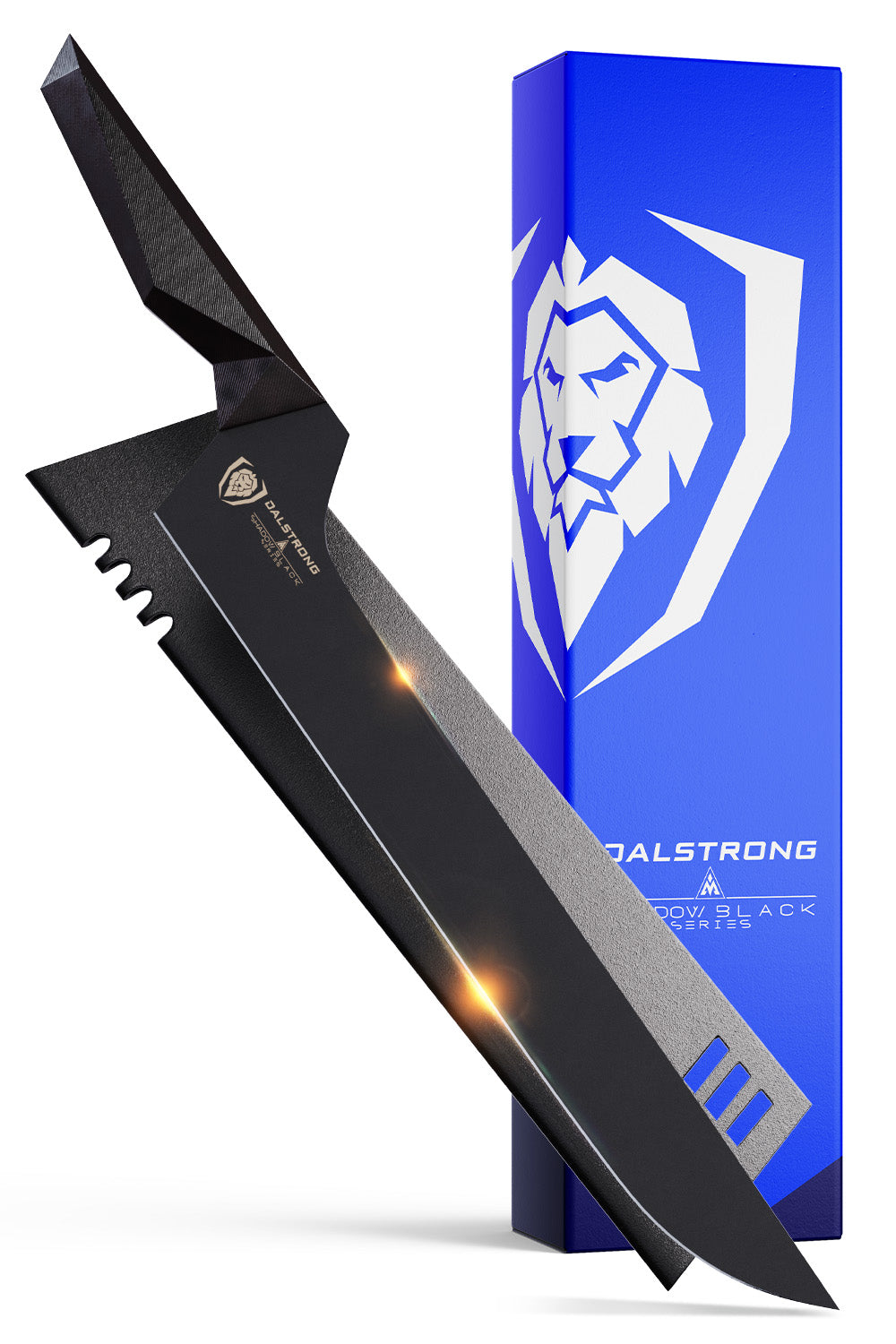
Quick Overview: Easy Ways To Peel Tomatoes
- On a cutting board, place the tomato with the stem side facing upwards.
- Cut at a downward angle from the center, also known as the equator of the tomato.
- Scoop out the seeds with a spoon.
- Remove the core.
- Cut into tomato wedges or slices.
Whether it’s going to the farmers market or your local grocery store, tomatoes are guaranteed to be in your basket. This fruit, also disguised as a base vegetable in foods is the key to most recipes. So, it only makes sense to understand how to shop, seed, and cut tomatoes.
1. How To Shop And Pick Tomatoes
Be it cherry tomatoes for your favorite vegetable garden salad, tomatoes for canning, to make tomato pie, tomato sauce, tomato soup, tomato coulis, or roasted tomatoes for marinara sauce, picking the right type of tomatoes is key.
Read about how to store tomatoes so they stay plump and fresh, here.
Listed here are a few easy steps on how to shop for the right kind of tomatoes and those you should avoid.
Steps:
- Stay away from tomatoes that have brown or black spots and blemishes on the skin. This will make peeling the skin a daunting task.
- Tomatoes should be firm and have a decent amount of weight to them. This would indicate that they’re ripe and juicy.
- The skin of the tomato should be soft to the touch but shouldn't be too soft that it peels off under pressure.
- There should be a tangy aroma near the stems of the tomato.
- If you want to use firmer tomatoes, go for the ones that are greener in color. These are best used for fried green tomatoes.
Kitchen Tips:
- Always wash the tomatoes and pat them dry before peeling and cutting them to avoid slipping and sliding on the cutting board.
- Remove the peels and seeds from the cooked tomato and add them to a composting bin for a more sustainable approach to cooking.
- Use canned tomatoes to make tomato and basil marinara sauce as they’re much more pulpy and juicy compared to store-bought ones. Green tomatoes and heirloom tomatoes can get the job done too.
2. How To Seed, Cut, And Store Tomatoes
There are 3 different ways in which you can seed and cut tomatoes. Choose the one that seems the most convenient for you. Make sure you’re using a sharp paring or chef’s knife, a sturdy cutting board, and a clean and dry swivel or Y peeler for peeling the skin, although this is optional.
How To Peel Tomatoes
Method 1
- Wash the tomatoes and pat them dry.
- Place the seeded tomato on a sturdy cutting board with the stem facing upwards.
- Gently roll the tomato onto the side and use a sharp knife to cut the top half of the tomato.
- Then, using a slotted spoon, remove the seeds by scooping them out.
- Cut them into four tomato wedges if that’s how you like them.
- This is optional, but you can peel off the skin, starting with the bottom of each tomato. You can enjoy the tomato flesh as it is, too.
- Dispose of the tomato skins or set aside the skins along with the seeds to compost them.
Method 2
- Wash the tomatoes and pat them dry.
- Place fresh tomatoes on a robust cutting board with the stem side up.
- Roll the tomato onto the side and cut the tomato at a downward angle from the center, also known as the equator of the fruit.
- Using a slotted spoon or regular spoon, remove the seeds and set aside the cut-up tomatoes.
- You can boil the tomatoes after peeling the skin. On a medium-high gas flame, add the tomatoes in a pot of boiling water. Once cool enough to handle, transfer them to a bowl of ice for an ice bath. You can start peeling the skin to cook them.
Method 3
- Wash the seeded tomatoes and pat them dry.
- Cut the stem side up and cut the tomato from the center into two halves.
- Remove the tomato from the board and place them on the rim of a bowl.
- Gently squeeze the tomato until the seeds begin to fall out.
- Remove the core and set aside the seeds.
Kitchen Tips
- Peel the skin off the tomato with a swivel or Y peeler. If you don’t have those in your kitchen, you can always use a paring knife.
- To make tomato sauce or marinara sauce, peel the de-seed tomatoes at room temperature so they don’t take on a lot of damage when you add them to a saucepan of water to boil.
- When you transfer the boiled tomatoes to ice water for an ice bath, you can peel off the skin then instead of before boiling them. This is when the tomatoes are cool enough to handle, you can remove the core and tomato flesh while keeping the pulp and juiciness together.
3. Health Benefits Of Tomatoes

The health benefits of tomatoes are endless. Let’s start by recognizing that, folks. This fruit is versatile, delicious, and full of nutritious content. Here’s how adding tomato in your diet can help you.
Nutritional Information
Tomatoes are phenomenal to strengthen your immune system organically. They're loaded with Lycopene which is an antioxidant that helps fight damage to your cells. Studies also show that introducing a good portion of tomatoes into your diet can decrease your chances of stomach, lung, and prostrate cancer. They also help keep diseases in the breast, mouth, colon, and throat at bay.
Lycopene also help lower the ‘bad’ cholesterol and blood pressure, too. This automatically reduces your chances of contracting heart diseases. Since tomatoes are loaded with vitamins B and E, they’re excellent for giving your heart health a good boost.
Tomatoes are also full of substances like lutein which helps protect your eyes from the blue light that’s often emitted by our computers and phones. Since this can keep your eyes from resting, adding tomato to your diet will help reduce the stress and strain that’s on them.
Kitchen Tips:
- Set aside the peels and seeds after removing them with a scalloped spoon.
- Remove the peels and seeds and place them on a damp cloth towel and put it toward the sunlight. Once they’re crusty and hard, use a mortar and pestle to grind them up. You can also add them to a coffee grinder. There you have some tomato powder for tomato soups, tomato salads, and homemade marinara sauce.
4. Dalstrong Tools You Need To Peel And Cut Tomatoes
1. Chef's Knife 6" Shadow Black Series NSF Certified
Made with razor-sharp and wear-resistant high-carbon 7CR17MOV-X vacuum treated steel, whether it is making tomato salads, fried green tomatoes, or canned tomato recipes, this chef’s knife will get the job done of cutting it with precision and speed.
PROS:
- The knuckle clearance on this knife makes it easy to cut the tomato without it sticking to the blade.
- The added amounts of chromium in the blade give it its stain-resistant traits to take on citrus foods like tomatoes, oranges, and lemons.
CONS:
- The titanium-nitride coating makes it a smidge difficult to sharpen, but with a few extra minutes, the job will be done.
- If you’re looking for a knife to do more than just cut the tomato, and even peel the tomatoes, a paring knife might be a better fit.
2. Paring Knife 3.5" Shogun Series ELITE
The blade on this paring knife is made with ultra-premium Japanese AUS-1OV super steel cutting core that is hardened at a staggering 62+ Rockwell for robustness and all the sturdiness that you need as you slice and cut a tomato.
PROS:
- The Dalstrong Diamond Detailing (D3) method used on the blade gives it a sleek mirror-like polish, making it striking to look at, and even more flexible to work with.
- The Dalstrong lion head logo adds to the aesthetic value of this paring knife.
CONS:
- The length of this knife could be a little short if you’re working with heirloom tomatoes as they’re a little larger in size than Roma tomatoes.
- You may be looking for a different design, and Dalstrong has you covered.
3. Kiritsuke Chef's Knife 8.5" Crusader Series NSF Certified
The blade on this Kiritsuke chef’s knife is designed to work with fruits and vegetables like tomatoes that tend to be a little slippery on the cutting board. The width of these knives helps keep the skin in place without damaging it, while also giving you precise cuts with every stroke.
PROS:
- The stain-resistant blade is perfect for folks wanting to use it to cut lemons, tomatoes, and oranges.
- The blade is tempered for resilience and robustness.
- Full tang blade for balance.
CONS:
- The blade on this knife transitions into the handle which might be off-putting for folks who like using traditional-looking knives.
- If you’re looking for handles made with wood or resin, this knife might not be the best fit.
4. Bird's Beak Paring Knife 2.75" Shadow Black Series NSF Certified
This bird’s beak knife is hand-polished for a sleek, satin-like appearance. Made with high-carbon, vacuum treated 7CR17MOV-X steel that is hardened at 58 Rockwell, it is safe to conclude that there isn’t a better paring knife.
PROS:
- The non-reflective titanium nitride coating is a phenomenal trait to have when working with tomatoes, as they’re corrosion-resistant.
- The knife has a tapered design, offering balance and sturdiness.
- The blade height and knuckle clearance help decrease prep time.
CONS:
- The titanium-nitride coating can add several minutes to the knife sharpening process.
- Home cooks often prefer working with slightly longer blade lengths on paring knives.
5. Vegetable Chef's Knife 7" Shadow Black Series NSF Certified

This vegetable knife is a personal favorite. The resilience of this 7-inch chef’s knife is outstanding, to say the least. The fiber-resin military grade G10 handle is highly impervious to moisture, cold, and heat.
PROS:
- Blade has high amounts of chromium for a stain-resistant finish.
- Hand-polished blade with a tall knuckle clearance to minimize prep time.
CONS:
- The design of this knife might not be everyone’s cup of tea.
- Some home cooks might prefer shorter blade lengths, to begin with.
5. Frequently Asked Questions
What is the easiest method to remove the skin from tomatoes?
The easiest method to remove the skin from tomatoes is by boiling it in hot water and then dunking it in an ice bath. Or, you could use a vegetable peeler.
How do you peel a tomato without boiling it?
You can do this with a paring knife or a vegetable peeler. Some potato peelers like the swivel and Y kind work tremendously.
How do you skin a tomato?
You can do this with a vegetable knife/peeler, or a paring knife.
How do you peel whole tomatoes?
You start by cutting them from the center, removing the stems with the tip of the knife if they’re too long, and cutting them into four parts. You can remove the core beforehand, too.
Shop Dalstrong Knives Today











 Serrated Tomato Knife 5" Gladiator Series NSF Certified Dalstrong
Serrated Tomato Knife 5" Gladiator Series NSF Certified Dalstrong 


